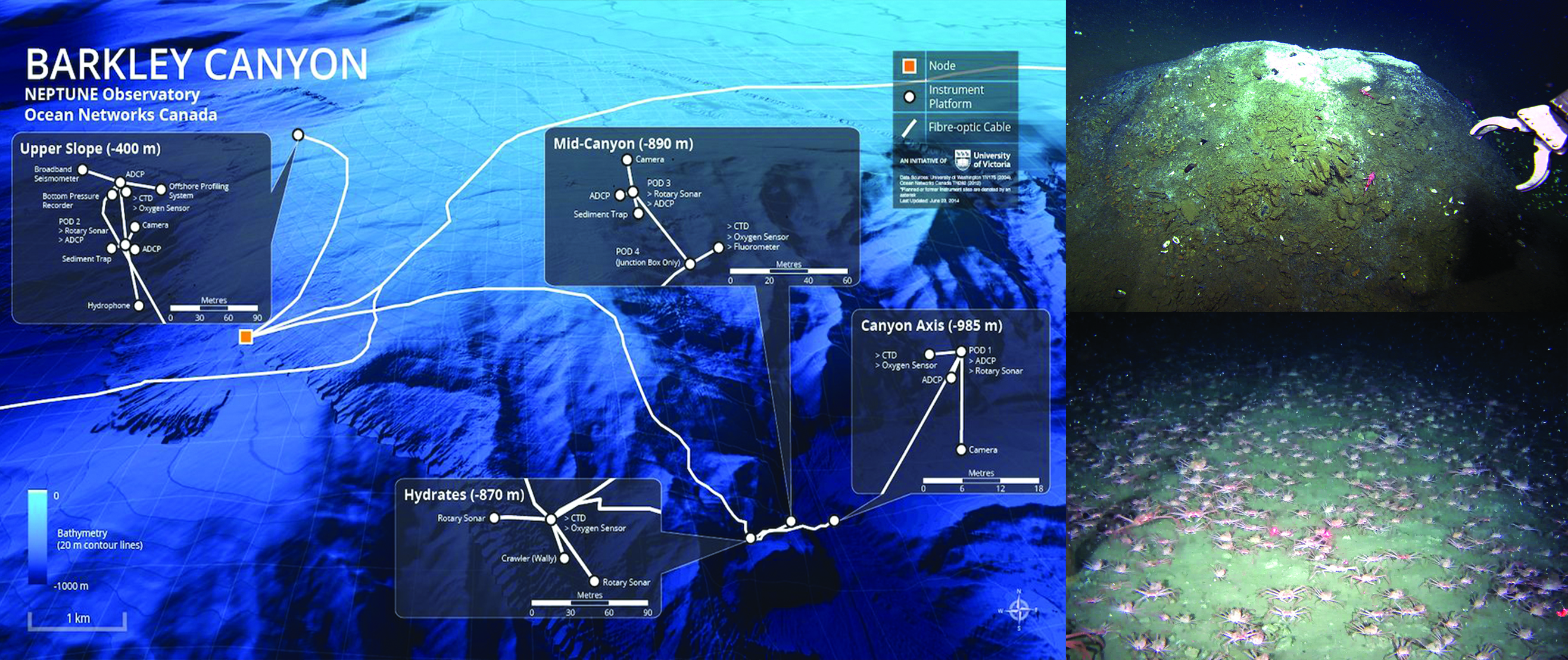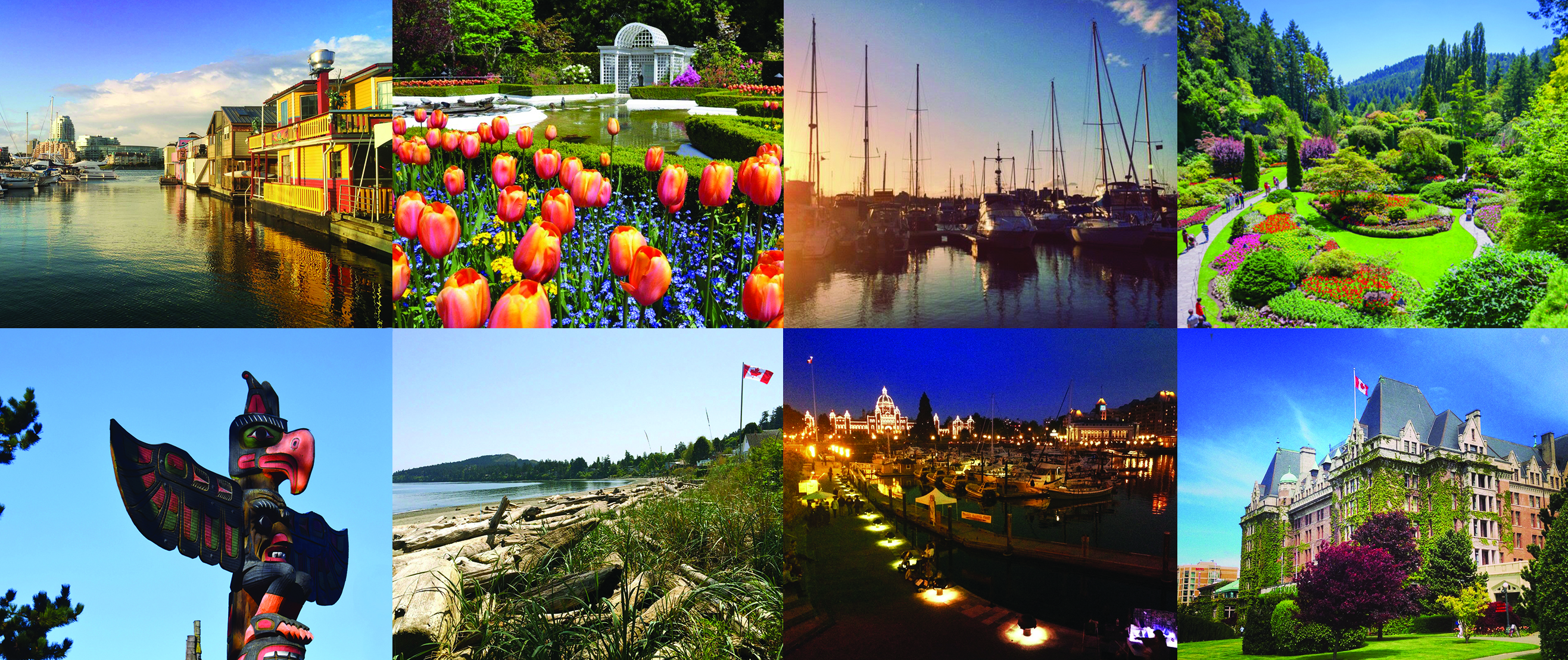Welcome to the 3rd INCISE International Submarine Canyon Symposium!
The 2016 INCISE Symposium will take place in Victoria, British Columbia, Canada, from 25 to 27 July 2016. The event is hosted by Ocean Networks Canada, an initiative of University of Victoria that operates world-leading observatories in the Pacific and Arctic Oceans.

Why study submarine canyons?
According to recent studies derived from high-resolution seafloor mapping, on the order of 10,000 submarine canyons exist worldwide. Less than one hundred canyons (only 1%) have been studied with some level of detail in terms of geology, physical oceanography, or habitat heterogeneity and biodiversity.
Submarine canyons are very important features along the world’s continental and island margins. They create terrain habitat heterogeneity and provide the main pathway for sediments, detrital organic matter, pollutants and marine debris from the shelf to the deep sea. Canyons often concentrate organic matter enhancing overall ecosystem biomass and fisheries and acting as biodiversity hotspots.
Recent advances in technology (e.g., ROVs, AUVs, gliders, etc) allowed the expansion in the exploration of submarine canyons, revealing exuberant ecosystems with never-seen before life forms and entire habitats. However, while the scientific exploration on canyons advances, so does the human footprint into the deep-sea, and on canyons in particular, with the increased worldwide demands for oil and gas, mineral deposits, and fisheries.

Therefore, the scientific community has the responsibility to prepare a comprehensive assessment of the role submarine canyons in generating and maintaining deep-sea biodiversity, ecosystem function and services; and in support of developing marine policies defining clear strategies for conservation.
Barkley Submarine Canyon
Ocean Networks Canada operates the NEPTUNE regional cabled observatory that since 2009 has four real-time monitoring pods in Barkley Submarine Canyon (map depicted above). The canyon habitat is affected by a permanent oxygen minimum zone and by tectonic processes derived from the Cascadia Basin subduction zone, triggering earthquakes, landslides and tsunamis, as well as allowing methane hydrate deposits to outcrop on surface sediments. Deep-sea species such as the grooved tanner crab Chionoecetes tanneri use the canyon as a conduit for mass onthogenetic migrations. Therefore, Barkley Canyon is a rich natural laboratory for the study of a myriad of processes that include sediment transport, ocean circulation, bentho-pelagic coupling, biodiversity and ecosystem function.
Victoria in summer time!
We selected Victoria as the next host city for the INCISE Symposium as it would be the first time a North American city would host the event (the 1st and 2nd editions were hosted in Brest, France, and Edinburgh, Scotland), therefore broadening the reach of the INCISE community. By travelling to British Columbia during summer time, symposium participants will have the opportunity to explore Victoria at it’s best, during the warm and sunny days of Pacific Northwest climate. There are plenty of options for sightseeing, hiking, camping, surfing, diving and wildlife encounters awaiting for you. We are hoping for a very rich and productive symposium and also that participants enjoy the beautiful landscape and local culture of Vancouver Island. Hope to see you here next July!

This website will provide you with the updates regarding symposium registration, program, keynote speakers, travel to and accommodation in Victoria, and tips for sightseing in Vancouver Island. The symposium organizing committee will send alerts when new information becomes available through this website.
Local Organizing Committee (ONC):
Scientific Committee:
INCISE Steering Committee:
-
Veerle Huvene (NOC)
-
Jamie Davies (UPL)
-
Joshu Mountjoy (NIWA)
-
Rob Hall (UEA)
-
Peter Harris (GRID-Arendal)
-
Nathalie Valette-Silver (NOAA)
-
Aaron Micallef (University of Malta)
-
Fabio De Leo (ONC)
